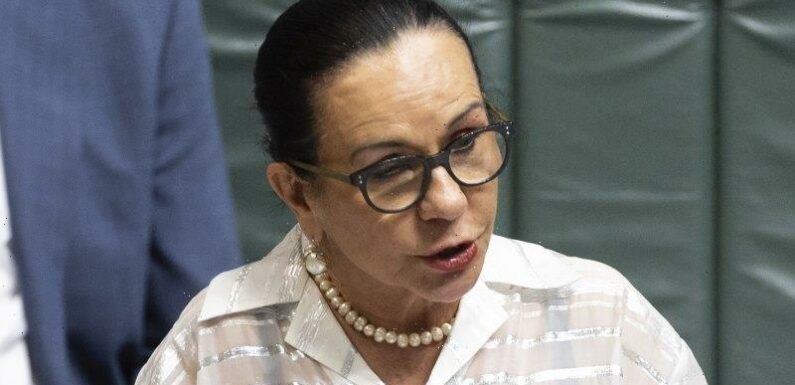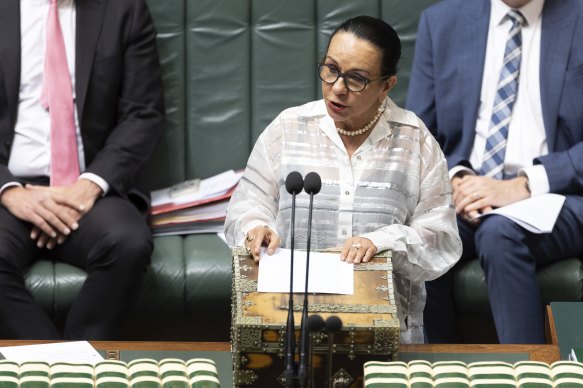
Indigenous Australians Minister Linda Burney has foreshadowed the government will overhaul outdated laws governing how to hold referendums before the national vote on whether to enshrine a Voice to parliament in the Constitution.
As the first nationwide advertising campaign promoting a Yes vote launches on Monday, Burney will deliver a major speech in Adelaide outlining the challenge of amending the Constitution for the first time in 45 years.
Minister for Indigenous Australians Linda Burney has flagged the government will modernise referendum laws before the national vote on the Voice to parliament.Credit:Alex Ellinghausen
Speaking at the World Indigenous People’s Conference on Education, she will say the Voice referendum will be the first held in the digital age and the government is looking carefully at how to modernise the Referendum Machinery Act 1984.
Under the act, voters are to be sent a pamphlet in the post outlining the proposed change to the Constitution, comprising 2000 words each on the Yes and No case, authorised by the parliament.
“Essentially, it’s outdated and needs to be refreshed,” Burney will say in the speech.
“The act does not contemplate the broad digital communications so common in contemporary Australia – currently it relies on voters being sent information in print form.”
She will also say the government will have a role to play in educating Australians about the Constitution and the mechanism for changing it, telling the forum that a 2015 survey found fewer than two-thirds of Australians had heard of the Constitution.
A Resolve Political Monitor survey, conducted for The Sydney Morning Herald and The Age, showed 64 per cent of voters backed draft wording proposed by Prime Minister Anthony Albanese to enshrine the Voice in the Constitution.
But in a sign of the challenge ahead for Voice supporters, voters were divided on what the change could achieve, with 27 per cent saying it would deliver practical outcomes as well as symbolic recognition but 15 per cent saying it would be symbolic only and 17 per cent saying it would not achieve either symbolic or practical benefits.
The History is Calling advertisement, which will run across television and social media, represents the first nationwide pitch by the architects of the Uluru Statement from the Heart for a Yes vote and builds on their earlier campaigns to raise awareness about the proposal.
Narrated by Pitjantjatjara and Nyungar man Trevor Jamieson, the ad channels the cultural custom of Indigenous story-telling, foretelling how “the First People got a voice”.
Throwing forward to a post-referendum future, it depicts everyday Australians driving the momentum for change by talking with friends, family and colleagues, with Jamieson saying: “And that’s how we changed this country for the better.”
Albanese told Brisbane radio on Monday that a constitutionally enshrined Indigenous Voice to parliament must be seen as a proposal that belongs to the Australian people, not his government.
“I want to make sure that the Voice to parliament isn’t my proposal, it’s our proposal. It’s Australia’s proposal. We know how hard it is to get a referendum up,” he told 4BC radio.
As Burney will note in her speech, the youngest Australians to have last voted in a successful referendum will be 64 years of age next year.
The last referendum was the 1999 republic vote, a time in which many Australians did not have access to the internet and mass social media did not exist.
“It’s been 23 years since Australia last held a referendum [and] 45 years since the last successful one – by far the longest period Australia has gone without amending our Constitution,” Burney will say.
Cut through the noise of federal politics with news, views and expert analysis from Jacqueline Maley. Subscribers can sign up to our weekly Inside Politics newsletter here.
Most Viewed in Politics
From our partners
Source: Read Full Article
